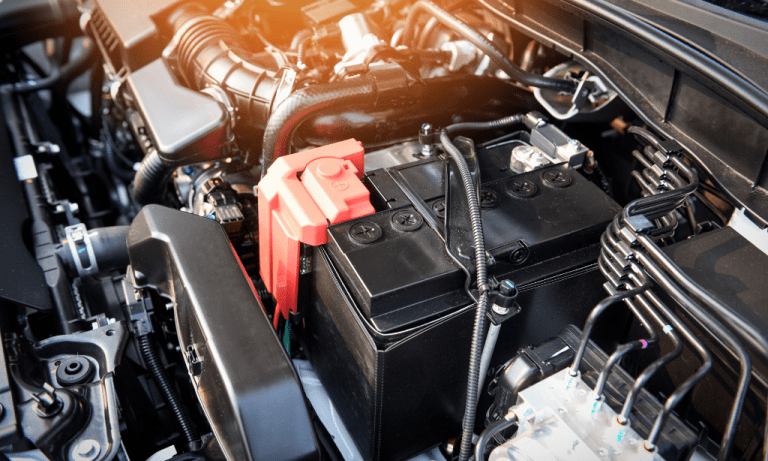How To Remove Trunk Liner Clips In 2024
Trunk liner clips play a crucial role in securing the trunk liner of your vehicle, ensuring a neat and organized interior space. However, there are instances when you need to remove these clips, whether for maintenance, repairs, or customization purposes. Knowing how to properly remove trunk liner clips is essential to prevent damage to the clips or the liner itself.
In this article, we will guide you through the step-by-step process of removing trunk liner clips effectively and safely. We’ll cover the tools you’ll need, offer tips for dealing with stubborn or damaged clips, and provide insights on reinstalling clips correctly.
Understanding the proper technique for removing trunk liner clips can save you time and frustration. Whether you need to access the trunk’s components, replace the liner, or modify your vehicle’s interior, knowing how to remove these clips will prove invaluable.
By following our guide, you’ll gain the confidence to remove trunk liner clips without causing any harm, allowing you to accomplish your maintenance or customization tasks efficiently. Let’s dive in and learn how to remove trunk liner clips like a pro.
What is a trunk liner?
A trunk liner is a protective covering or mat that is placed in the trunk or cargo area of a vehicle. It is designed to provide several benefits, including:
1. Protection: A trunk liner shields the trunk floor and walls from damage, such as scratches, spills, and stains. It helps prevent wear and tear caused by luggage, groceries, tools, or other items that may be transported in the trunk.
2. Organization: Trunk liners often have textured surfaces or raised edges that help prevent items from sliding around during transit. This promotes organization and prevents items from shifting, reducing the risk of damage and making it easier to locate and access items in the trunk.
3. Easy Maintenance: Trunk liners are typically made from durable materials that are easy to clean. They can be removed, washed, and dried, allowing for quick maintenance and ensuring a clean and fresh trunk space.
4. Sound Deadening: Some trunk liners are designed to reduce noise and vibrations, providing a quieter and more comfortable ride by minimizing the sound of items moving in the trunk.
Types of trunk liner clips
There are several types of trunk liner clips commonly used in vehicles. The specific type of clip used can vary depending on the vehicle make and model. Here are a few examples of trunk liner clips:
1. Push-Type Clips
These are the most common type of trunk liner clips. They consist of a plastic body with a central pin or post that is pushed into a corresponding hole or receptacle. The pin provides tension and holds the clip securely in place. Push-type clips are often used for securing trunk liners to the body of the vehicle.
2. Screw-Type Clips
These clips feature a threaded body that can be screwed into a pre-drilled hole in the vehicle’s body or trunk liner. They provide a strong and secure attachment point. Screw-type clips are often used in areas where additional strength is required or when a more permanent fastening solution is desired.
3. Expansion Clips
These clips have a tapered or ribbed design and are inserted into a hole. As they are pushed or tightened, they expand and create a secure fit. Expansion clips are commonly used for securing trunk liner panels or other interior trim pieces.
4. Snap-In Clips
These clips have a snapping mechanism that allows them to snap into place. They often have multiple prongs or arms that provide a secure grip when inserted into a hole or receptacle. Snap-in clips are frequently used for attaching trunk liner trim pieces or panels.
Gather necessary tools
To remove trunk liner clips, you will need a few basic tools that can assist in the process. Here are the necessary tools you should gather before starting:
1. Flat-Head Screwdriver
A flat-head screwdriver with a thin and wide blade is useful for prying and lifting the clips. It can help release the clips from their locked positions without damaging them.
2. Panel Removal Tool
A panel removal tool or trim removal tool with a flat and wide tip is specifically designed for safely removing clips and trim pieces without causing scratches or damage to the surrounding surfaces. It provides better leverage and control compared to a screwdriver.
3. Needle-Nose Pliers
Needle-nose pliers are handy for gripping and pulling out stubborn or hard-to-reach clips. They have long, thin jaws that can grasp the clips securely and provide extra leverage when removing them.
4. Trim Clip Removal Tool
In some cases, a trim clip removal tool may be necessary, especially for certain types of clips that require a specific tool for easy removal. This tool is designed to slide under the clip and release it without causing damage.
5. Protective Gloves
It’s a good idea to wear protective gloves, such as mechanic gloves or work gloves, to protect your hands from sharp edges or any potential injuries during the removal process.
6. Flashlight
A flashlight can help you get a clear view of the clips and their positions, especially in poorly lit areas of the trunk.
Step-by-Step Guide to Removing Trunk Liner Clips
1. Identify the location of the trunk liner clips:
– Take a moment to inspect the trunk liner and locate the clips that need to be removed. They are typically positioned along the edges or corners of the liner and may also be found underneath any removable trim pieces.
2. Select the appropriate tool for removal:
– Based on the type of clips used in your vehicle, choose the suitable tool from your gathered tools. A flat-head screwdriver or a panel removal tool is commonly used for most clip types.
3. Insert the tool under the clip head:
– Gently insert the tool’s blade or tip under the head or base of the clip. Position it as close to the clip’s attachment point as possible to ensure optimal leverage and prevent damage.
4. Apply pressure and pry the clip upward:
– With the tool in place, apply firm but controlled upward pressure to lift and pry the clip out of its receptacle or hole. Use leverage to avoid excessive force, as it may cause the clip to snap or break.
5. Repeat the process for remaining clips:
– Move systematically from one clip to another, repeating steps 3 and 4 until all the necessary clips have been removed. Take your time and work carefully to avoid damaging the trunk liner or surrounding trim pieces.
6. Handle stubborn clips with caution:
– Some clips may be stubborn or tightly secured. If a clip is difficult to remove, try wiggling the tool gently while applying upward pressure. If necessary, use needle-nose pliers for extra grip and leverage.
7. Set aside removed clips safely:
– As you remove each clip, set them aside in a safe place where they won’t get lost or damaged. It’s essential to keep track of the clips for reinstallation or replacement later.
Dealing with Stubborn or Damaged Clips
Dealing with stubborn or damaged trunk liner clips requires some additional techniques and considerations. Here’s what you can do:
1. Lubrication: Apply a small amount of lubricant, such as silicone spray or WD-40, to the base of the stubborn clip. Let it sit for a few minutes to penetrate and loosen any debris or corrosion that may be causing the clip to stick.
2. Heat application: Use a heat gun or a hairdryer set on a low heat setting to gently warm the area around the stubborn clip. The heat can help soften the plastic and make it more pliable, making it easier to remove the clip. Be cautious not to overheat or damage the trunk liner or surrounding materials.
3. Additional leverage: If a clip is exceptionally stubborn, you can try using a larger screwdriver or a trim removal tool with a wider and flatter tip to provide more leverage. This can help increase the force applied to the clip, making it easier to pry it out.
4. Needle-nose pliers: For clips that are damaged or have broken heads, needle-nose pliers can be useful. Grip the remaining portion of the clip firmly with the pliers and pull it out with a steady, gentle motion. Take care not to damage the surrounding surfaces.
5. Replacement clips: If a clip is damaged beyond repair or breaks during removal, it may need to be replaced. Make sure to measure and identify the specific type and size of the clip needed for replacement. Automotive stores or online retailers often carry a variety of replacement clips that match different vehicle models.
Frequently Asked Questions
Q1. How many clips are typically used in a trunk liner?
The number of clips used in a trunk liner can vary depending on the vehicle make and model. However, it is common to find multiple clips along the edges and corners of the trunk liner, as well as underneath any removable trim pieces. The exact number of clips will depend on the specific design and layout of the trunk liner.
Q2. Can I reuse trunk liner clips?
In general, trunk liner clips can be reused if they are in good condition and not damaged during removal. However, it is always recommended to inspect the clips for any signs of wear, breakage, or deformation. If the clips are damaged or compromised in any way, it is advisable to replace them with new ones to ensure a secure and proper fit when reinstalling the trunk liner.
Q3. Where can I find replacement trunk liner clips?
Replacement trunk liner clips can be found at automotive stores, dealerships, or online retailers specializing in auto parts and accessories. It is important to have the specific make, model, and year of your vehicle on hand when searching for replacement clips to ensure compatibility. Alternatively, you can consult the vehicle manufacturer or refer to the vehicle’s repair manual for information on obtaining replacement clips.
- How To Expertly Attach Patches To Headliner: Master the Process - October 3, 2023
- Can You Safely Clear Coat Your Polished Aluminum for Ultimate Shine? - October 3, 2023
- Will A Raptor Grill Fit An F150? Unveiling the Perfect Customization Option - October 3, 2023




